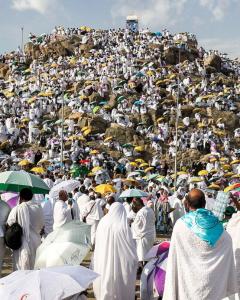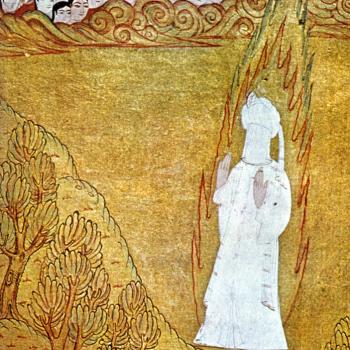
When the mirror of your heart becomes clear and pure,
you’ll behold images which are outside this world.
You will see the image and the image-Maker,
both the carpet of the spiritual expanse
and the One who spreads it.Rumi, Mathnawi: II, 72-3
Spiritual perception is a recurrent theme in our tradition; prominent in Rumi’s Masnavi, it also emerges in the work of other Sufi poets and philosophers such as Yunus Emre. And it’s a theme that has been opening up for me lately, both in some of my own reading as well as in a recent retreat where we focused on writing as a spiritual practice.
Earlier I had understood spiritual perception as the capacity to become aware of finer and higher levels of being. I had thought of it as developing a special kind of intuition. One part spotlight and one part touchstone, it could illuminate what is hidden, as well as evaluate the truth of things.
I still believe those capacities are important aspects of spiritual perception. But now I am coming to think there is more to it than internal processes; something larger even than a single person’s consciousness. The key to extending spiritual perception beyond the confines of the ego self, to the spaciousness of true self, seems to lie in the imagination.
Henry Corbin, the French philosopher and Islamic theologian, writes in his essay, “Mundus Imaginalis, or the Imaginary and the Imaginal”:
It is quite commonplace to refer to our present day civilization as the “civilization of the image” (to wit our magazines, motion pictures, and television). But one wonders whether — like all commonplaces — this one does not also harbor a radical misunderstanding, a complete misapprehension. For, instead of the image being raised to the level of the world to which it belongs, instead of being invested with a symbolic function that would lead to inner meaning, the image tends to be reduced simply to the level of sensible perception and thus to be definitely degraded.
The English poet Kathleen Raine, who like Corbin was also influenced by Sufism, makes a similar observation in her essay on “The use of the beautiful”:
The present decadence of the arts and all the more or less ineffectual attempts to find other foundations upon which to rebuild them than those of tradition, arises quite simply from the disappearance of the idea of an intelligible world (to use Plato’s phrase), a spiritual order, a world of the soul, whose existence is not that of the fleeting images of nature.
What Raine means by “fleeting images of nature” is not the green, pristine realm of Mother Nature but rather the material domain, i.e. the world of things to which our society devotes almost all its attention.
Both Raine and Corbin are contrasting the impoverished fictions of our present-day materialist culture – which so often only seem to project the anxieties or dull routines of waking life onto a different screen – with the art and poetry of traditional cultures that draw on symbolic images with a wide range of psychological and spiritual resonance. The poets and mystics of such cultures do not use art as a means to satisfy or promote their nafs. Instead they use images to convey the truths of a higher order which we are called to recognize on the spiritual path. For example, consider these verses from Mevlana that suggest so much in a few metaphors:
Weep like the waterwheel,
that green herbs may spring up
from the courtyard of your soul.
The imagination in Sufism is different from the fantasies or daydreams with which it is associated in our culture. It is rather the ability to access a dimension of higher consciousness (what Rumi calls Universal Intellect) where archetypes, Platonic Forms and the quintessences of the things we experience in the material world reside.
Mevlana writes in Discourse #38 of Fihi ma Fihi: “The Universal Intellect is the giver of all things. Those who have united the partial [intellect] with the Universal Intellect and become one are prophets and saints.”
He explains: “The Prophet is not called ‘unlettered’ because he was unable to write. He was called that because his ‘letters,’ his knowledge and wisdom, were innate, not acquired.”
In other words, the Prophet’s heart was a clear mirror of Haqq, allowing the images of the Universal Intellect to be reflected there as inspiration, revelation and knowledge.
Such are the gifts of the imaginal realm, which Corbin insists is just as real as the material realm we know through our senses as well as realm of ideas we access through the partial intellect. The imaginal realm is “both intermediary and intermediate,” according to Corbin; a category of experience that falls somewhere between the sensory and the mental, and which also translates between the two. He explains:
Imagination is the cognitive function of this world. Ontologically, it ranks higher than the world of the senses and lower than the purely intelligible world; it is more immaterial than the former and less immaterial than the latter. This approach to imagination, which had always been of prime importance for our mystical theosophers, provided them with a basis for demonstrating the validity of dreams and of the visionary reports describing and relating “events in Heaven” as well as the validity of symbolic rites.
The prophetic imagination does not pertain only to religion or times long past. Even in recent history, it has been a catalyst of social change. How is it that one person’s vision of a different world can inspire so many others – people like Martin Luther King and Nelson Mandela, Simone Weil and Dorothy Day? Only the imagination has the power to pierce the veils of conditioning and complacency that lull us into accepting injustice and the suffering of our fellow beings as “just the way things are”.
Prophets and visionaries develop their spiritual imagination to an especially high degree, yet it is a capacity that all of us can awaken. And I feel increasingly that it is even a duty for us as spiritual seekers at this time, when the stakes for humanity and the planet are so high. Imagining solutions to climate change, overpopulation and an imploding food system isn’t running away from those issues but the first step toward addressing them.
Shaikh Kabir often reminds us that as human beings, we are here in this world to be The Witness for God: al shahid, which is the same word in Arabic for martyr. I certainly feel that when I try to see things as they really are, it challenges me to give up those parts of my nafs that would rather remain asleep, in thrall to the dunya’s empty reassurances.
Acts of the imagination, then, are also acts of courage. And I believe that as we summon the will to awaken from the sleep of complacency and face what is painful and difficult, inshallah we will also start to perceive more of what is beautiful and true. As Mevlana tells us:
The five spiritual senses are all connected.
They’ve grown from one root.
As one grows strong, the others strengthen, too:
each one becomes a cupbearer to the rest.
Seeing with the eye increases speech;
speech increases discernment in the eye.
As sight deepens, it awakens every sense,
so that perception of the spiritual
becomes familiar to them all.(Mathnawi: II, 3236-9)












